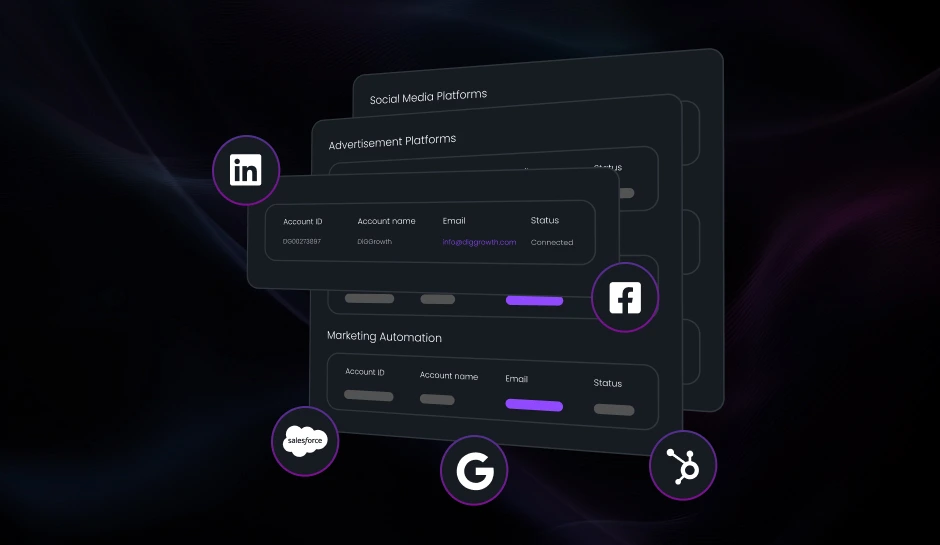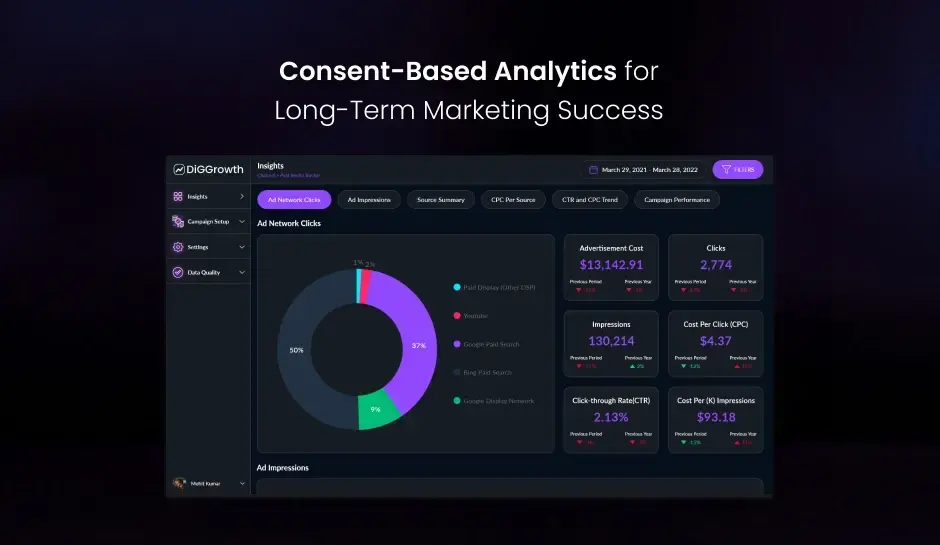
Marketing Lead Generation: Strategies and Best Practices
Businesses need a strategic approach to nurture leads and convert them into loyal customers. This guide explores integrating lead generation into your overall marketing strategy, offering a cohesive framework for sustainable growth. Read on.
Securing a consistent flow of qualified leads is no longer a luxury; it’s a necessity. While many companies invest heavily in marketing initiatives, a critical gap often remains—a lack of targeted lead-generation strategies. This results in an unfulfilled equation: impressive marketing efforts fail to translate into sustainable growth.
The answer lies in a data-driven, strategic approach to lead generation. It’s about moving beyond generic campaigns and attracting individuals with a genuine interest in your offerings. By nurturing these high-value leads with informative and engaging content, you foster trust and, ultimately, pave the way for long-term customer relationships.
This comprehensive guide will empower you to unlock the potential of lead generation. We’ll address businesses’ common challenges in attracting qualified leads and equip you with actionable strategies to overcome them.
Understanding Marketing Leads
Effective lead generation begins with a clear understanding of the types of leads and their significance in the sales process. Marketing Qualified Leads (MQLs) and Sales Qualified Leads (SQLs) represent distinct stages in the buyer’s journey, each requiring tailored approaches to conversion.
Marketing Qualified Leads (MQLs) are prospects who have shown interest in your products or services through various marketing efforts but may still need to be ready to purchase. They require nurturing to move them further down the sales funnel.
On the other hand, sales Qualified Leads (SQLs) have been identified as prospects who are ready to engage with sales teams. They have typically met specific criteria that indicate their readiness to make a purchasing decision.
Understanding the characteristics and behaviors differentiating MQLs from SQLs is essential for developing targeted strategies that effectively move prospects toward conversion. By aligning marketing efforts with the distinct needs of each lead type, businesses can optimize their resources and improve overall conversion rates.
Step-by-Step Breakdown of the Lead Generation Process
Effective lead generation is a multifaceted process aimed at attracting and converting potential customers into qualified leads. Here’s a detailed look at each stage:
- Identifying Target Audience:
- Conduct thorough market research to identify your target audience’s demographics, behaviors, and preferences.
- Define your ideal customer profile (ICP) based on insights gathered to understand who your potential customers are and what motivates them.
- Creating Buyer Personas:
- Develop detailed buyer personas that represent different segments of your target audience.
- Persona creation involves gathering insights into persona demographics, challenges, goals, buying preferences, and decision-making criteria.
- Generating Awareness:
- Implement content marketing strategies such as blogging, SEO (Search Engine Optimization), and social media marketing to increase visibility and attract your target audience.
- Use paid advertising campaigns, including PPC (Pay-Per-Click) ads and social media ads, to amplify reach and drive traffic to your content.
- Capturing Interest:
- Offer valuable content assets such as ebooks, whitepapers, case studies, or webinars in exchange for contact information (email addresses).
- Use compelling lead magnets and optimized landing pages to encourage prospects to provide their details and initiate contact.
- Nurturing Leads:
- Implement email marketing campaigns with personalized content tailored to the interests and behaviors of your leads.
- Use marketing automation tools to automate email sequences, track engagement metrics, and deliver targeted messages at the right time.
- Qualifying Leads:
- Use lead scoring techniques to assess and prioritize leads based on their level of engagement, readiness to buy, and fit with your ideal customer profile.
- Collaborate closely with sales teams to establish lead qualification criteria and ensure seamless handover of qualified leads for conversion.
- Converting Leads into Customers:
- Deploy effective sales strategies to convert qualified leads into paying customers.
- Utilize CRM (Customer Relationship Management) systems to manage customer interactions, track sales activities, and monitor the progress of leads through the sales funnel.
- Measuring and Optimizing Performance:
- Monitor key performance indicators (KPIs) such as conversion rates, cost per lead, and ROI (Return on Investment) to evaluate the effectiveness of your lead generation efforts.
- Continuously optimize your lead generation strategies based on data-driven insights, market trends, and feedback from sales and marketing teams.
Essential Types of Lead Generation: Inbound vs. Outbound
Inbound Marketing Strategies
Businesses harnessing inbound marketing strategies‘ power engage audiences by delivering content solutions to problems or needs. SEO and content marketing emerge as cornerstone techniques in this realm. With SEO, brands enhance their online visibility, capturing the attention of users actively seeking information via search engines. Content marketing dives deeper, fostering sustained interest through blogs, videos, whitepapers, and more to build lasting relationships with potential customers.
Outbound Marketing Techniques
Contrasting inbound efforts, outbound marketing techniques encompass proactive outreach. These activities might involve calls, emails, or even face-to-face engagements. Traditional advertising through TV, radio, and print still plays a significant role in generating leads, despite the rising digital tide. Here, the emphasis lies on disseminating a message widely to create brand awareness and stimulate interest among potential clients.
In-Depth: Inbound Marketing Strategies
Inbound marketing strategies have transformed the art of lead generation. Tailored content attracts interested prospects and initiates conversations that can culminate in business relationships. By understanding and implementing key inbound methodologies, businesses can effectively grow their leads pool.
Leveraging Online Content for Lead Capture
High-quality content attracts potential leads. Businesses must create valuable and relevant content that addresses the specific needs of their target audience. Guides, whitepapers, infographics, and videos are examples of content that triggers interest and would serve as persuasive lead capture tools. When users download or interact with this content, they provide contact information, which can then be nurtured through the sales funnel.
Engaging with Potential Customers through Social Media
Dialogue with potential customers on social media platforms often lays the foundation for lead generation. Platforms like LinkedIn, Twitter, and Facebook offer unparalleled opportunities to connect with audiences. Companies that strategically use these interactions to provide value and demonstrate expertise find their follower count is not just a number but a repository of prospective leads.
Outbound Marketing Techniques and Their Impact
Outbound marketing techniques are pillars of lead generation, encompassing a range of strategies designed to push messages to a broad audience. Paid advertising, including Pay-Per-Click (PPC) Advertising, represents a cornerstone of outbound marketing efforts. By targeting specific demographics and keywords, PPC campaigns can drive significant business traffic, resulting in potential lead generation.
Despite the ascendancy of digital platforms, traditional methods like direct mail and cold calling have yet to be rendered obsolete. They continue to play a role, often blending with digital strategies to create a multi-touch approach to outreach. With its tangible presence, direct mail can capture prospects’ attention in a cluttered digital environment. At the same time, cold calling, when executed with a focused strategy, can lead to meaningful conversations and opportunities for relationship building.
Furthermore, trade shows and events remain dynamic in outbound lead generation. These gatherings provide a network-rich environment where businesses can demonstrate their products or services in person, forging immediate connections that often lead to fruitful leads. The hands-on experience and human interaction at trade shows can solidify interest in a way purely digital communication cannot achieve.
Effective Strategies for Marketing Lead Generation
Generating high-quality leads is essential for businesses aiming to expand their customer base and drive revenue growth. Effective lead generation strategies involve a combination of targeted approaches and tactical execution. Here are proven strategies to enhance your marketing lead generation efforts:
1. Content Marketing: The Cornerstone of Attraction
High-quality content that resonates with your ICP is the cornerstone of effective lead generation. This content can take various forms, such as:
- Blog posts:
- Ebooks and white papers:
- Infographics and videos:
Address industry trends, offer valuable insights, and position yourself as a thought leader.
Provide in-depth information on relevant topics, offering solutions to your audience’s pain points.
Present complex data in a visually engaging and easily digestible format.
Crafting compelling content requires:
- Understanding your audience’s needs:
- Search Engine Optimization (SEO):
- Calls to Action (CTAs):
Focus on addressing their specific challenges and providing valuable solutions.
Optimize your content with relevant keywords to ensure your target audience finds it organically.
Include clear CTAs within your content to encourage visitors to download resources, subscribe to your newsletter, or contact you for more information.
2. Social Media Engagement: Building Relationships and Expanding Reach
Social media platforms offer a powerful avenue for connecting with your target audience, building brand awareness, and generating leads. Here’s how to leverage them effectively:
- Identify the right platforms:
- Create engaging content:
- Run targeted social media ads:
- Run contests and giveaways:
Focus on the platforms where your ICP is most active.
Post valuable content that sparks conversation, offers insights, and showcases your expertise.
Tailor your ad campaigns to reach specific demographics and interests, ensuring maximum impact.
Encourage audience participation and brand interaction with engaging contests and giveaways.
3. Search Engine Optimization (SEO): Be Found Where Your Audience Searches
Optimizing your website and content for search engines ensures your target audience finds you when they’re searching online. Here are some ways to improve your SEO:
- Keyword research:
- On-page optimization:
- Link building:
Identify relevant keywords your ICP uses to find solutions like yours.
Optimize your website’s content with relevant keywords and meta descriptions.
Acquire high-quality backlinks to your website from relevant sources to improve your authority.
4. Email Marketing: Nurturing Leads and Building Relationships
Email marketing allows for personalized communication and lead nurturing. Here’s how to leverage email marketing effectively:
- Build an email list:
- Segment your audience:
- Provide valuable content:
Offer valuable incentives (e.g., ebooks, white papers) to encourage sign-ups.
Tailor your email campaigns to different audience segments’ specific needs and interests.
Offer educational content, industry updates, and exclusive offers to keep your audience engaged.
5. Paid Advertising: Reach Your Target Audience with Precision
Paid advertising platforms like Google Ads and social media advertising offer targeted reach and amplification of your marketing efforts. Here’s what to consider:
- Clearly define your campaign goals:
- Target the right audience:
- Track and analyze results:
Align your goals with lead generation objectives (e.g., website traffic, lead capture).
Utilize demographic and interest-targeting features to reach your ICP.
Monitor campaign performance and adjust your strategy for optimal results.
Lead Scoring and Qualification: Amplify Sales Precision
Lead scoring stands as a strategic approach to ranking prospects against a scale that represents the perceived value each lead brings to the organization. The primary benefit lies in enhancing the efficiency of sales and marketing teams by enabling them to focus on leads with the greatest potential to convert. The backbone of this approach is a reliance on a robust set of data-driven indicators that signal a lead’s likelihood to become a customer.
Defining Lead Scoring and its Benefits
Introduced as a systematic method, lead scoring involves assigning points based on a lead’s behavior and profile. When aggregated, these points identify the leads that are most engagement-ready. The advantages extend to sharpened segmentation, improved sales and marketing alignment, and an increased return on investment through focused engagement of high-quality leads.
Developing Criteria for Lead Qualification
The first step in this process requires establishing clear criteria, encompassing demographic information, online behavior, engagement with the company, and specific interactions with marketing content. These criteria must align with the overall business goals and sales targets. For instance, frequent downloads of marketing materials or repeated visits to high-intent website pages often indicate a lead with elevated interest and readiness to engage further.
Implementing a Lead Scoring System to Prioritize Sales Efforts
Implementing a lead scoring system necessitates collaboration between sales and marketing departments to agree upon the definition of a qualified lead. Marketing automation platforms can simplify this task by tracking lead activity across digital touchpoints and assigning scores automatically. Subsequently, sales teams can prioritize these leads, strategically investing time and resources to optimize the sales funnel and drive revenue growth.
- Lead scoring optimizes sales team efficiency by highlighting those leads most likely to convert.
- Criteria for scoring should reflect the target profile and readiness to purchase.
- Automated lead scoring tools ensure that leads are evaluated consistently and objectively.
Tracking and Analyzing Lead Generation Metrics
Mastering the art of lead generation forms the foundation for successful marketing strategies. Executing a host of lead generation strategies without understanding their performance is akin to navigation without a compass. Hence, attention to lead generation metrics ensures that the tactics deployed are indeed turning prospects into valuable leads.
Using Analytics to Refine and Improve Lead Generation Efforts
Data accrued from lead generation campaigns becomes fully significant when it influences future marketing decisions. Analytics must be harnessed not just to record outcomes but also to enlighten and shape subsequent strategies. Funnel analysis, cohort analysis, and attribution modeling enrich understanding of lead behaviors and campaign performance.
Marketers adjust campaign parameters by analyzing trends and patterns to heighten lead generation and nurturing activities.
Are the SEO practices inviting the right audience? Can adjustments be made to landing page designs to improve conversions? The data provides these answers, helping to refine and polish lead generation initiatives.
Making Data-Driven Decisions to Optimize Marketing Strategies
Success springs from informed decisions. Integrating real-time analytics and performance indicators enables marketers to act swiftly, seizing opportunities and mitigating inefficiencies. A/B testing driven by solid data detects the most resonant messages and visuals with target audiences. Data-driven decisions lift marketing efforts from educated guesses to strategic moves, enhancing overall effectiveness and achieving a shorter path to desired results.
Data stands at the fulcrum of optimizing marketing strategies. The numbers do not lie; they often point toward more fruitful lead generation undertakings. With every bit of information, a clearer picture of the lead landscape emerges, directing efforts not just to any audience but to the right audience. Continuous learning through rigorous tracking and analysis crowns efforts with the kind of effectiveness that sets leading marketers apart.
Key Takeaways
- Integration and Alignment: Align lead generation efforts with broader marketing strategies to ensure consistency and effectiveness in achieving business goals.
- Continuous Optimization: Regularly refine and adapt lead generation tactics through A/B testing, content updates, and targeting adjustments to improve outcomes.
- Feedback and Analysis: Embrace feedback from sales teams, marketing metrics, and consumer responses to fine-tune lead generation strategies and stay ahead of market trends.
- Adaptability to Market Changes: Stay agile in response to evolving market dynamics, technological advancements, and shifts in consumer behavior to maintain competitive edge.
- Strategic Innovation: Innovate lead generation approaches with new tools and strategies that enhance efficiency, lead quality, and overall marketing impact.
Conclusion
By fostering a cohesive marketing strategy that seamlessly integrates lead generation efforts, businesses can unlock a powerful engine for growth. This approach ensures optimal resource allocation, fosters continuous improvement and allows for adaptation to market changes. By actively seeking and incorporating feedback and staying abreast of evolving trends, lead generation strategies can be refined to attract high-quality leads, ultimately translating into sustainable business success.
Ready to take your lead generation to the next level? Contact the experts at Diggrowth today!
Our team of experienced marketers can help you develop and implement a comprehensive lead generation strategy that aligns perfectly with your marketing matrix and overall business goals. For further inquiries, contact us at info@diggrowth.com and we’ll get back to you.
Ready to get started?
Increase your marketing ROI by 30% with custom dashboards & reports that present a clear picture of marketing effectiveness
Start Free Trial
Experience Premium Marketing Analytics At Budget-Friendly Pricing.

Learn how you can accurately measure return on marketing investment.
Additional Resources
Integrating Data from Different Channels for a Holistic View of Your Marketing Performance
Who's your ideal customer? Where do they come...
Read full post postGet Your Channels to Play Nice: Integrated Data for Smarter Marketing
If you’re a savvy marketer, you’re living in...
Read full post postConsent-Based Analytics: Ensure Long-Term Marketing Success
As marketers, we want our customers to perceive...
Read full post postFAQ's
Success metrics include conversion rates, cost per lead, ROI, and lead quality indicators like engagement rates and sales conversions.
Content marketing is crucial as it attracts and engages potential leads through valuable content such as blogs, videos, and whitepapers, establishing credibility and nurturing relationships.
To maintain effectiveness, lead generation strategies should be regularly reviewed and updated based on market trends, consumer behavior shifts, and performance analytics.
Social media platforms can be used to share content, engage with prospects, run targeted ad campaigns, and build brand awareness, all of which contribute to lead generation efforts.
Aligning lead generation with business goals ensures that marketing efforts contribute directly to business growth, optimizes resource allocation, and maximizes ROI.
 Shagun Sharma
Shagun Sharma  Sameer Pawar
Sameer Pawar 

